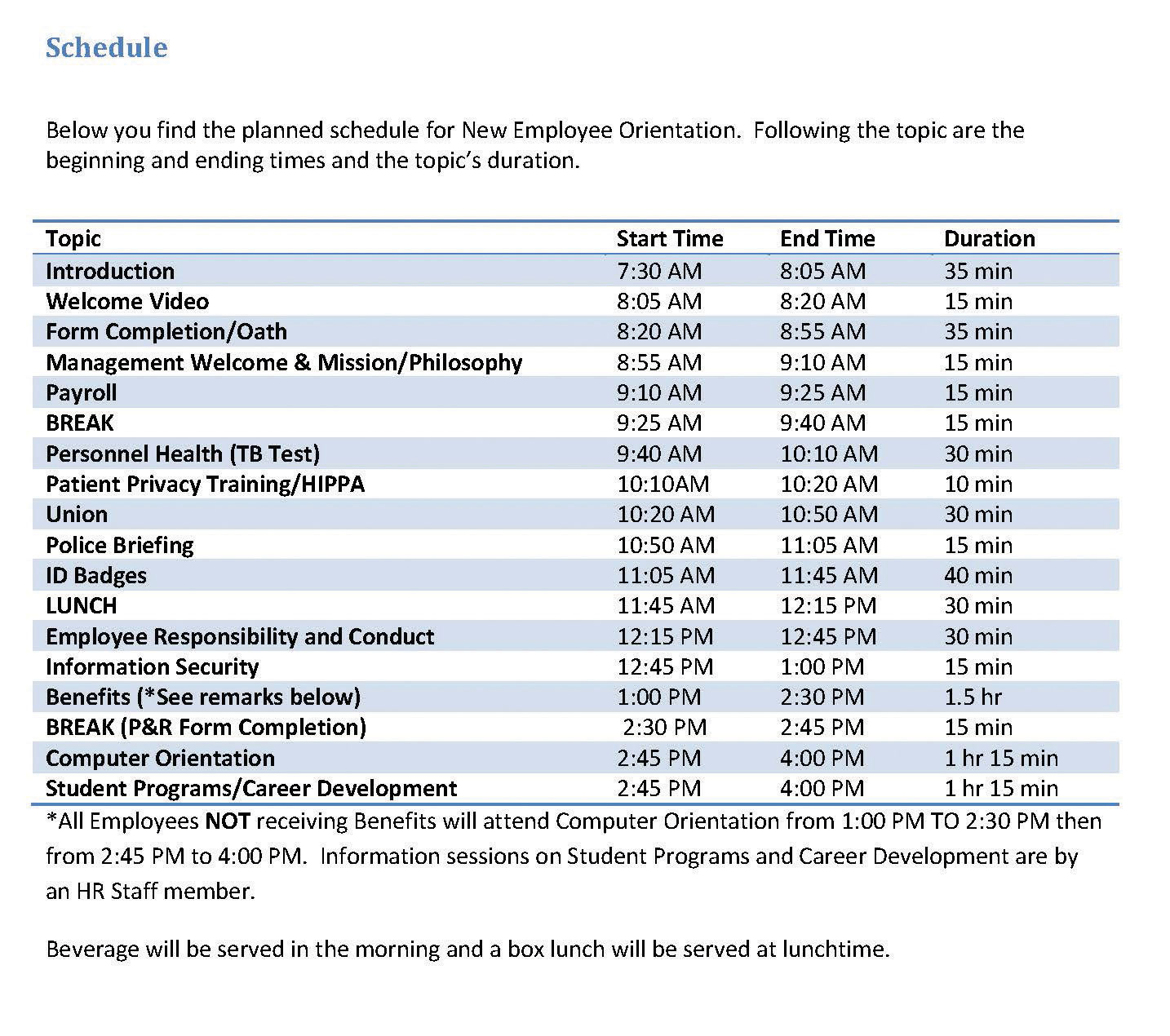Learning Objective
- Explain the four steps involved when training an employee.
Any effective company has training in place to make sure employees can perform his or her job. During the recruitment and selection process, the right person should be hired to begin with. But even the right person may need training in how your company does things. Lack of training can result in lost productivity, lost customers, and poor relationships between employees and managers. It can also result in dissatisfaction, which means retention problems and high turnover. All these end up being direct costs to the organization. In fact, a study performed by the American Society for Training and Development (ASTD) found that 41 percent of employees at companies with poor training planned to leave within the year, but in companies with excellent training, only 12 percent planned to leave (Branham, 2005). To reduce some costs associated with not training or undertraining, development of training programs can help with some of the risk. This is what this chapter will address.
For effective employee training, there are four steps that generally occur. First, the new employee goes through an orientation, and then he or she will receive in-house training on job-specific areas. Next, the employee should be assigned a mentor, and then, as comfort with the job duties grows, he or she may engage in external training. Employee training and development is the process of helping employees develop their personal and organization skills, knowledge, and abilities.
Employee Orientation
The first step in training is an employee orientation. Employee orientation is the process used for welcoming a new employee into the organization. The importance of employee orientation is two-fold. First, the goal is for employees to gain an understanding of the company policies and learn how their specific job fits into the big picture. Employee orientation usually involves filling out employee paperwork such as I-9 and 401(k) program forms.
The goals of an orientation are as follows:
- To reduce start-up costs. If an orientation is done right, it can help get the employee up to speed on various policies and procedures, so the employee can start working right away. It can also be a way to ensure all hiring paperwork is filled out correctly, so the employee is paid on time.
- To reduce anxiety. Starting a new job can be stressful. One goal of an orientation is to reduce the stress and anxiety people feel when going into an unknown situation.
- To reduce employee turnover. Employee turnover tends to be higher when employees don’t feel valued or are not given the tools to perform. An employee orientation can show that the organization values the employee and provides tools necessary for a successful entry.
- To save time for the supervisor and coworkers. A well-done orientation makes for a better prepared employee, which means less time having to teach the employee.
- To set expectations and attitudes. If employees know from the start what the expectations are, they tend to perform better. Likewise, if employees learn the values and attitudes of the organization from the beginning, there is a higher chance of a successful tenure at the company.
Some companies use employee orientation as a way to introduce employees not only to the company policies and procedures but also to the staff. For an example of an orientation schedule for the day, see Figure 8.1.
Figure 8.1
Some companies have very specific orientations, with a variety of people providing information to the new hires. This can create a welcoming environment, besides giving the employee the information they need. This is an example of one such orientation.
Source: Sample schedule courtesy of Louis Stokes Cleveland VA Medical Center, http://www.cleveland.va.gov/docs/NEOSchedule.pdf (accessed September 2, 2011).
Human Resource Recall
Have you ever participated in an orientation? What was it like? What components did it have?
In-House Training
In-house training programs are learning opportunities developed by the organization in which they are used. This is usually the second step in the training process and often is ongoing. In-house training programs can be training related to a specific job, such as how to use a particular kind of software. In a manufacturing setting, in-house training might include an employee learning how to use a particular kind of machinery.
Many companies provide in-house training on various HR topics as well, meaning it doesn’t always have to relate to a specific job. Some examples of in-house training include the following:
- Ethics training
- Sexual harassment training
- Multicultural training
- Communication training
- Management training
- Customer service training
- Operation of special equipment
- Training to do the job itself
- Basic skills training
As you can tell by the list of topics, HR might sometimes create and deliver this training, but often a supervisor or manager delivers the training.
Mentoring
After the employee has completed orientation and in-house training, companies see the value in offering mentoring opportunities as the next step in training. Sometimes a mentor may be assigned during in-house training. A mentor is a trusted, experienced advisor who has direct investment in the development of an employee. A mentor may be a supervisor, but often a mentor is a colleague who has the experience and personality to help guide someone through processes. While mentoring may occur informally, a mentorship program can help ensure the new employee not only feels welcomed but is paired up with someone who already knows the ropes and can help guide the new employee through any on-the-job challenges.
To work effectively, a mentoring program should become part of the company culture; in other words, new mentors should receive in-house training to be a mentor. Mentors are selected based on experience, willingness, and personality. IBM’s Integrated Supply Chain Division, for example, has successfully implemented a mentorship program. The company’s division boasts 19,000 employees and half of IBM’s revenues, making management of a mentorship program challenging. However, potential mentors are trained and put into a database where new employees can search attributes and strengths of mentors and choose the person who closely meets their needs. Then the mentor and mentee work together in development of the new employee. “We view this as a best practice,” says Patricia Lewis-Burton, vice president of human resources, Integrated Supply Chain Division. “We view it as something that is not left to human resources alone. In fact, the program is imbedded in the way our group does business” (Witt, 2005).
Figure 8.2
In-house training occurs when someone from within the company is delivering the training information, while external training is usually delivered by someone who does not work for the company and is not physically on-site.
Tadas1980 – FL Technics Training – CC BY-SA 3.0.
Some companies use short-term mentorship programs because they find employees training other employees to be valuable for all involved. Starbucks, for example, utilizes this approach. When it opens a new store in a new market, a team of experienced store managers and baristas are sent from existing stores to the new stores to lead the store-opening efforts, including training of new employees.
External Training
External training includes any type of training that is not performed in-house. This is usually the last step in training, and it can be ongoing. It can include sending an employee to a seminar to help further develop leadership skills or helping pay tuition for an employee who wants to take a marketing class. To be a Ford automotive technician, for example, you must attend the Ford ASSET Program, which is a partnership between Ford Motor Company, Ford dealers, and select technical schools1.
How Would You Handle This?
To Train or Not to Train
Towanda Michaels is the human resource manager at a medium-size pet supply wholesaler. Casey Cleps is a salesperson at the organization and an invaluable member of the team. Last year, his sales brought in about 20 percent of the company revenue alone. Everybody likes Casey: he is friendly, competent, and professional.
Training is an important part of the company, and an e-mail was sent last month that said if employees do not complete the required safety training by July 1, they would be let go.
It is July 15, and it has just come to Towanda’s attention that Casey has not completed the online safety training that is required for his job. When she approaches him about it, he says, “I am the best salesperson here; I can’t waste time doing training. I already know all the safety rules anyway.”
Would you let Casey go, as stated in the e-mail? How would you handle this?
Key Takeaways
- Employee training and development is the framework for helping employees develop their personal and organizational skills, knowledge, and abilities. Training is important to employee retention.
- There are four steps in training that should occur. Employee orientation has the purpose of welcoming new employees into the organization. An effective employee orientation can help reduce start-up costs, reduce anxiety for the employee, reduce turnover, save time for the supervisor and colleagues, and set expectations and attitudes.
- An in-house training program is any type of program in which the training is delivered by someone who works for the company. This could include management or HR. Examples might include sexual harassment training or ethics training. In-house training can also include components specific to a job, such as how to use a specific kind of software. In-house training is normally done as a second and ongoing step in employee development.
- A mentor form of training pairs a new employee with a seasoned employee. This is usually the third step in employee training. A mentor program for training should include a formalized program and process.
- External training is any type of training not performed in-house; part of the last training step, external training can also be ongoing. It can include sending employees to conferences or seminars for leadership development or even paying tuition for a class they want to take.
Exercises
- Why do you think some companies do not follow the four training steps? What are the advantages of doing so?
- What qualities do you think a mentor should have? List at least five.
- Have you ever worked with a mentor in a job, at school, or in extracurricular activities? Describe your experience.
1“Automotive Technology/Ford ASSET Course,” Sheridan Technical Center, accessed July 29, 2011, http://www.sheridantechnical.com/Default.aspx?tabid=692.
References
Branham, L., The 7 Hidden Reasons Why Employees Leave (New York: American Management Association, 2005), 112–5.
Thompson, A., “Starbucks Corporation,” July 24, 2011, accessed July 29, 2011, http://www.mhhe.com/business/management/thompson/11e/case/starbucks-2.html.
Witt, B., “Serious Leadership: IBM Builds a Successful Mentoring Program,” Material Handling Management, December 1, 2005, accessed July 25, 2010, http://mhmonline.com/workforce-solutions/mhm_imp_4483/.



